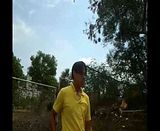Topic: Bow Falling forward
Please, forgive my ignorance but in an effort to learn proper Korean Technique I would like to post a few questions. One being, recently I have seen some historical photos of korean Hwarang Knights shooting off of horseback with the bow falling forward after the shot.
And although that seems to be consistent with all the other historical photos Ive seen, not all of todays Korean archers do this. Why is that?
Second being, what would be the advantage of this? I know yumi shooters do this, and I know the reasoning, but they do it in a manner that allows the bow to propel itself forward, where some of todays Korean archers look as though they are twisting the bow forward with the wrist?
I have many more questions, but will leave it at this for now.
Thank you,
Joe
